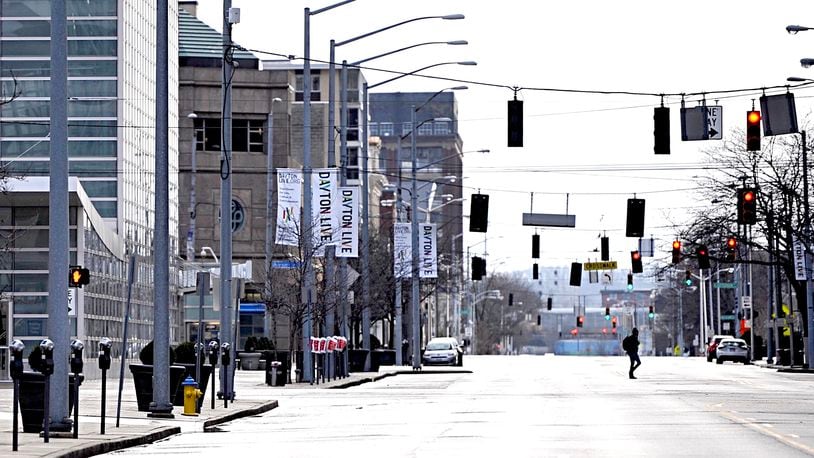It is not clear how long the extension will last nor whether DeWine will adjust the hours of the curfew, which now is from 10 p.m. to 5 a.m.
“We’re not there yet and as governor I have to try to keep this virus down as we get vaccines out as quickly as we can,” he said.
The governor also cited a new variant in Ohio as part of the reason for a curfew extension.
Ohio Department of Health Chief Medical Officer Dr. Bruce Vanderhoff said earlier this week that the new variant is believed to be more contagious and could result in more cases and hospitalizations.
Vanderhoff and DeWine both said the vaccines appear to be effective against the new variant and stressed that health guidelines, such as wearing a mask and frequent hand washing, will still help to prevent the variant from being transmitted.
The governor said he understands that the curfew is frustrating for bar and restaurant workers but noted the risk for spread is higher in those businesses because people cannot wear masks while eating and drinking.
“What we have learned since this began is the power of the mask,” DeWine said. “An example of this is schools. We don’t see spread in schools themselves. You can’t do that in a restaurant. You can’t do that in a bar.”
The curfew was set at 10 p.m. as a compromise after some health experts advised the governor that bars and restaurants should be shut down.
“We cut off some of the time when there can be contact,” the governor said. “We cut off some of the time when people have been drinking longer and then they’re not as inhibited.”
The curfew first went into effect Nov. 19 and was scheduled to last 21 days to help reduce the spread of coronavirus.
At the time, Ohio was seeing a surge in cases and hospitalizations, with nearly 200,000 cases and 7,000 hospitalizations reported in November. The state broke multiple daily case records. The Monday before Thanksgiving, Ohio reported nearly 12,000 cases.
The state also issued an order requiring retail stores to enforce mask wearing around the same time the curfew started.
DeWine said he believes the two orders resulted in cases dropping slightly before leveling out.
In early December, the curfew was extended for another 21 days as Ohio hoped to contain the virus over the holidays and prevent additional surges.
“These next several weeks will be the toughest yet,” DeWine said at the time. “We’re heading into the biggest holiday season on our calendar, while riding the biggest wave of COVID-19 that we’ve had so far.”
While cases began to decrease at the end of December, concerns about holiday gatherings prompted another 21-day extension, which is the curfew set to expire this Saturday.
Throughout the curfew, the state has allowed exemptions for people heading to and from work or getting food or medical care. Other exemptions include First Amendment activities, such as protests or religious services.
About the Author
